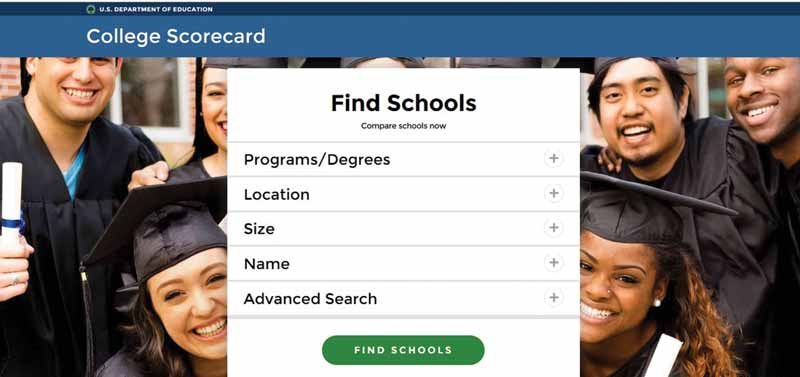Even though my father was a guidance counselor, choosing a college was still an overwhelming process. There were few independent reviews of colleges and no real way of knowing if the information I found was accurate. Unearthing lesser known, high-quality colleges outside of my region was tough. It was even tougher to figure out if a college’s alumni found jobs after graduating or even graduated at all. In short, I didn’t know what I didn’t know.
The College Scorecard, called for by President Barack Obama, solves this challenge by giving everyone—students, families, guidance counselors and nonprofits—access to a whole host of data verified by the U.S. Department of Education on thousands of institutions across the nation in an easy-to-use online tool. College is still the best investment a person can make—bachelor’s degree-holders earn roughly $1 million more over their lifetimes than high school graduates.
The College Scorecard makes choosing between thousands of institutions easier by providing simple-to-understand information on institutions’ incoming students and the graduating students’ outcomes. Along with 1.5 million other folks, I’m using the Scorecard as I help my daughter in her college search.
Today, we updated the Scorecard as a part of our first annual data refresh. It includes updates to our data on college completion, debt and repayment statistics and post-college earnings. This refresh now brings the College Scorecard to 19 years of higher education data that is made available, encompassing over 1,700 data points across 7,000 institutions.
Also, we highlighted key efforts to measure accurate completion rates and other student outcomes, including the Student Achievement Measure and the Voluntary Framework of Accountability.
Since its redesign in September 2015, the department has improved the Scorecard to make it better for you. For example:
• In December 2015, we held a Technical Review Panel with representatives of institutions, researchers, web developers, higher education associations and other experts, where we talked about improvements to the College Scorecard website, data and Application Programming Interface (API)—a tool to make our data more easily accessible for the development of new applications and tools by outside developers (to date, over 600 developers have accessed the Scorecard API).
• In January 2016, we added nearly 700 additional institutions that predominately grant certificates to the Scorecard for users to have even more options when searching the website.
• In March 2016, through an interim data update, we removed closed institutions and updated our “caution flags” for schools facing financial or federal compliance issues. Providing information about institutions under review by the department helps ensure accountability for schools and protect the interests of students.
And we’re not done yet. The higher education landscape is changing, and this tool will itself change over time. We’re working to integrate the College Scorecard into the FAFSA, considering other cautionary indicators that students should be aware of before enrolling in an institution and continuously improving the quality of our data, particularly around completion rates.
Check out the updated College Scorecard (www.scorecare.ed.gov) and stay tuned for more.
Ted Mitchell is U.S. Under Secretary of Education.



















